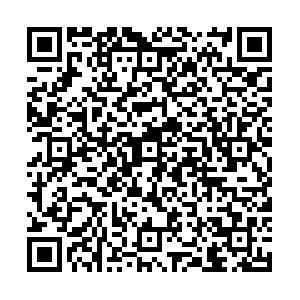|
[1]
|
王玉亮,王峰,耿洁.细胞因子与细胞因子风暴[J].天津医药,2020,6(48):494-498.
|
|
[2]
|
Farquhar JW, Claireaux AE. Familial haemophagocytic reticulosis[J]. Arch Dis Child, 1952, 27(136):519-525. doi: 10.1136/adc.27.136.519
|
|
[3]
|
Ferrara JL, Abhyankar S, Gilliland DG. Cytokine storm of graft-versus-host disease: a critical effector role for interleukin-1[J]. Transplant Proc, 1993, 25:1216-1217.
|
|
[4]
|
Wong CK, Lam CW, Wu AK, et al. Plasma inflammatory cytokines and chemokines in severe acute respiratory syndrome[J]. Clin Exp Immunol, 2004, 136(1):95-103. doi: 10.1111/j.1365-2249.2004.02415.x
|
|
[5]
|
Yuen KY, Wong SS. Human infection by avian influenza A H5N1[J]. Hong Kong Med J, 2005, 11(3):189-199.
|
|
[6]
|
Murdaca G, Paladin F, Tonacci A, et al. The potential role of cytokine storm pathway in the clinical course of viral respiratory pandemic[J]. Biomedicines, 2021, 9(11):1688. doi: 10.3390/biomedicines9111688
|
|
[7]
|
Chatenoud L, Ferran C, Legendre C, et al. In vivo cell activation following OKT3 administration. Systemic cytokine release and modulation by corticosteroids[J]. Transplantation, 1990, 49(4):697-702. doi: 10.1097/00007890-199004000-00009
|
|
[8]
|
Eastwood D, Findlay L, Poole S, et al. Monoclonal antibody TGN1412 trial failure explained by species differences in CD28 expression on CD4+ effector memory T-cells[J]. Br J Pharmacol, 2010, 161(3):512-526. doi: 10.1111/j.1476-5381.2010.00922.x
|
|
[9]
|
Rotz SJ, Leino D, Szabo S, et al. Severe cytokine release syndrome in a patient receiving PD-1-directed therapy[J]. Pediatr Blood Cancer, 2017, 64(12): 10.1002/pbc. 26642.
|
|
[10]
|
Maude SL, Frey N, Shaw PA, et al. Chimeric antigen receptor T cells for sustained remissions in leukemia[J]. N Engl J Med, 2014, 371(16):1507-1517. doi: 10.1056/NEJMoa1407222
|
|
[11]
|
Lee DW, Santomasso BD, Locke FL, et al. ASTCT consensus grading for cytokine release syndrome and neurologic toxicity associated with immune effector cells[J]. Biol Blood Marrow Transplant, 2019, 25(4):625-638. doi: 10.1016/j.bbmt.2018.12.758
|
|
[12]
|
Li W, Moore MJ, Vasilieva N, et al. Angiotensin-converting enzyme 2 is a functional receptor for the SARS coronavirus[J]. Nature, 2003, 426(6965):450-454. doi: 10.1038/nature02145
|
|
[13]
|
Xu Z, Shi L, Wang Y, et al. Pathological findings of COVID-19 associated with acute respiratory distress syndrome[J]. Lancet Respir Med, 2020, 8(4):420-422. doi: 10.1016/S2213-2600(20)30076-X
|
|
[14]
|
Huang C, Wang Y, Li X, et al. Clinical features of patients infected with 2019 novel coronavirus in Wuhan, China[J]. Lancet, 2020, 395(10223):497-506. doi: 10.1016/S0140-6736(20)30183-5
|
|
[15]
|
陈蕾,刘辉国,刘威,等.2019新型冠状病毒肺炎29例临床特征分析[J].中华结核和呼吸杂志,2020,43(3):203-208. doi: 10.3760/cma.j.issn.1001-0939.2020.03.013
|
|
[16]
|
Zhang Y, Li J, Zhan Y, et al. Analysis of serum cytokines in patients with severe acute respiratory syndrome[J]. Infect Immun, 2004, 72(8):4410-4415. doi: 10.1128/IAI.72.8.4410-4415.2004
|
|
[17]
|
Zhou J, Chu H, Li C, et al. Active replication of Middle East respiratory syndrome coronavirus and aberrant induction of inflammatory cytokines and chemokines in human macrophages: implications for pathogenesis[J]. J Infect Dis, 2014, 209:1331-1342. doi: 10.1093/infdis/jit504
|
|
[18]
|
Kim ES, Choe PG, Park WB, et al. Clinical progression and cytokine profiles of middle east respiratory syndrome coronavirus infection[J]. J Korean Med Sci, 2016, 31(11):1717-1725. doi: 10.3346/jkms.2016.31.11.1717
|
|
[19]
|
Risdall RJ, McKenna RW, Nesbit ME, et al. Virus-associated hemophagocytic syndrome: a benign histiocytic proliferation distinct from malignant histiocytosis[J]. Cancer, 1979, 44(3):993-1002. doi: 10.1002/1097-0142(197909)44:3<993::AID-CNCR2820440329>3.0.CO;2-5
|
|
[20]
|
Tang Y, Xu X, Song H, et al. Early diagnostic and prognostic signifcance of a specifc Th1/Th2 cytokine pattern in children with haemophagocytic syndrome[J]. Br J Haematol, 2008, 143:84-91. doi: 10.1111/j.1365-2141.2008.07298.x
|
|
[21]
|
Han XC, Ye Q, Zhang WY, et al. Cytokine profiles as novel diagnostic markers of Epstein-Barr virus-associated hemophagocytic lymphohistiocytosis in children[J]. J Crit Care, 2017, 39:72-77. doi: 10.1016/j.jcrc.2017.02.018
|
|
[22]
|
Mazodier K, Marin V, Novick D, et al. Severe imbalance of IL-18/IL-18BP in patients with secondary hemophagocytic syndrome[J]. Blood, 2005, 106(10):3483-3489. doi: 10.1182/blood-2005-05-1980
|
|
[23]
|
Chen Y, Wang Z, Luo Z, Zhao N, Yang S, Tang Y. Comparison of Th1/Th2 cytokine profiles between primary and secondary haemophagocyticlymphohistiocytosis[J]. Ital J Pediatr, 2016, 42(1):50. doi: 10.1186/s13052-016-0262-7
|
|
[24]
|
Park JH, Riviere I, Gonen M, et al. Long-term follow-up of CD19 CAR therapy in acute lymphoblastic leukemia[J]. N Engl J Med, 2018, 378:449-459. doi: 10.1056/NEJMoa1709919
|
|
[25]
|
Wang M, Munoz J, Goy A, et al. KTE-X19 CAR T-cell therapy in relapsed or refractory mantle-cell lymphoma[J]. N Engl J Med, 2020, 382:1331-1342. doi: 10.1056/NEJMoa1914347
|
|
[26]
|
HAY K A, HANAFI L A, LI D, et al. Kinetics and biomarkers of severe cytokine release syndrome after CD19 chimeric antigen receptor-modified T-cell therapy[J]. Blood, 2017, 130(21):2295-2306. doi: 10.1182/blood-2017-06-793141
|
|
[27]
|
Marofi F, Al-Awad AS, Sulaiman Rahman H, et al. CAR-NK Cell: A new paradigm in tumor immunotherapy[J]. Front Oncol, 2021, 11:673276. doi: 10.3389/fonc.2021.673276
|
|
[28]
|
Ciurea SO, Schafer JR, Bassett R, et al. Phase 1 clinical trial using mbIL21 ex vivo-expanded donor-derived NK cells after haploidentical transplantation[J]. Blood, 2017, 130(16):1857-1868. doi: 10.1182/blood-2017-05-785659
|
|
[29]
|
Vezys V, Penaloza-MacMaster P, Barber DL, et al. 4-1BB signaling synergizes with programmed death ligand 1 blockade to augment CD8 T cell responses during chronic viral infection[J]. J Immunol, 2011, 187(4):1634-1642. doi: 10.4049/jimmunol.1100077
|
|
[30]
|
Teachey DT, Rheingold SR, Maude SL, et al. Cytokine release syndrome after blinatumomab treatment related to abnormalmacrophage activation and ameliorated with cytokine-directed therapy[J]. Blood, 2013, 121:5154-5157. doi: 10.1182/blood-2013-02-485623
|
|
[31]
|
Urasaki T, Ono M, Mochizuki T, et al. Case report: acase of trimethoprim/sulfamethoxazole-triggered hypotensive shock: cytokine release syndrome related to immune checkpoint inhibitors and drug-induced hypersensitivity syndrome[J]. Front Oncol, 2021, 11:681997. doi: 10.3389/fonc.2021.681997
|
|
[32]
|
Lee DW, Gardner R, Porter DL, et al. Current concepts in the diagnosis and management of cytokine release syndrome[J]. Blood, 2016, 124(2):188-195.
|
|
[33]
|
Oda H, Ishihara M, Miyahara Y, et al. First case ofcytokine release syndrome after nivolumab for gastric cancer[J]. Katayama N Case Rep Oncol, 2019, 12(1):147-156. doi: 10.1159/000496933
|

 点击查看大图
点击查看大图


 下载:
下载:
